Neoplasticism – Introducing the New Image Movement
While it began as a 20th century avant-garde art style, Neoplasticism has proved itself to have much wider contemporary appeal. It has had numerous diverse proponents since its inception, where it began as a hybrid of artistic movements such as Neo-Impressionism, Suprematism, Constructivism, Cubism, and most notably, De Stijl. It is not uncommon to hear of Neoplasticism and De Stijl being used interchangeably. While both Dutch modern art movements are closely related, they are distinct.
Contents
Full-Tilt-Boogie on Neoplastic Art
As an artistic movement, Neoplasticism initially applied to paintings and sculptures, but it has gone on to influence design, architecture, and popular culture. Its founding artist Piet Mondrian was inspired by music and dance, but he also saw Neoplasticism as the artistic expression of theosophist ideals. Neoplasticism could be regarded as an artistic response to World War I and it was tailored towards a transforming modern society.

What Is Neoplasticism?
Beginning in 1917 and ending somewhere between 1931 and 1944, Neoplasticism refers to the painting style and avant-garde art theory established by the Dutch painters Theo van Doesburg and Piet Mondrian. They are noted as the figureheads of this movement, but it was Mondrian who coined the term Neoplasticism. The Dutch art movement was embraced by several artists and architects associated with the Dutch De Stijl movement. In Dutch, Neoplasticism can be referred to as “Nieuwe Beeld”, which means new art, or the new image. This was a new way of creating that embraced the basic forms of composition. The term can be explicated as the “new plastic arts”. Plastic arts refer to painting and sculpture and their ability to be shaped and molded. The Neoplatonism art definition denotes Mondrian’s vision of pure abstraction under his strict rules of composition featuring simplistic art elements like primary colors, geometric lines, and shapes.
Neoplasticism was influenced by other art movements of the early 20th century like Cubism and Suprematism. Like the founding father of non-objective art Wassily Kandinsky, the abstractions of Neoplasticism artists were often reflections of the natural world.
To suit the modern era, Neoplasticism art stripped naturalism from a work of art to better access universal truths. Seeking parallels between art and life Neoplasticism intended to embody the laws of equilibrium and harmony. Neoplasticism art rejected representation, opting for austere geometry and color in its asymmetrical but balanced compositions and thus claiming to produce a more accurate reflection of the harmony in nature. The Dutch artist Mondrian developed his own version of De Stijl which he called Neoplasticism to achieve more variety, movement, energy, harmony, and order by using simplified essential art elements such as rectangular geometry and primary colors. In its attempt to attain a pure, universal, non-objective art Neoplasticism took the principles of De Stijl to an extreme. Because they were so similar and mutually advantageous, Neoplasticism was mostly synonymous with De Stijl.
The Evolution of Neoplasticism Art
To know what neoplasticism is, it is useful to understand its evolution. Like other avant-garde movements of the 20th century, Neoplasticism largely emerged in response to the chaos and slaughter of World War I. In the spirit of helping society start afresh, Modern artists demanded social and spiritual redemption. In the aftermath of the war, art embraced utopian visions of the transformative potential of art. Naturally, Neoclassicism was influenced by one of the most famous art movements of this period. During a trip to Paris in 1911, Mondrian encountered Picasso’s Cubist paintings for the first time, and was inspired by the equivalence offered by Cubism. Cubism was diverting from the sentimentality of naturalism, attempting to compose images exploring ephemeral aspects of reality that are constant and absolute.
Neoplasticism shared a conceptual basis with Suprematism, which was a Russian art movement established by Kazimir Malevich around 1915. Advocating non-descriptive artworks, the movement was introduced by The Black Square (1915), which was one of Malevich’s first and most iconic Suprematist artworks. The painting featured a simple black square on a white background. By freeing art from the burden of subject matter Malevich encouraged viewers to search for meaning within the painting itself as an object.
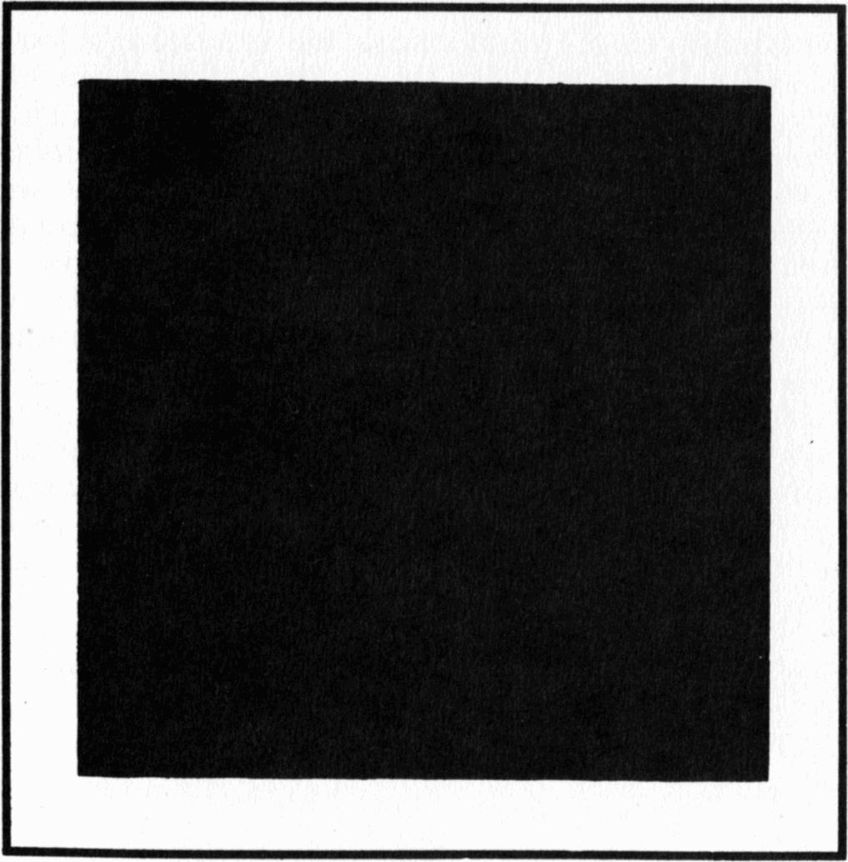
Instead of representation, the Russian avant-garde artist highlighted methodology, the form, and texture of the surface. For the first time, European audiences were exposed to non-objective painting. That is, images that did not attempt to represent a subject. Suprematism paintings had mystical associations and attempted to evoke notions of the infinite universe. They were not typically framed because they were meant to operate as extensions of the natural world. Soon after its inception, Suprematism gave rise to Constructivism, another Russian avant-garde artistic movement. Its founder Vladimir Tatlin had dabbled in Suprematism and worked extensively with Kazimir Malevich. The Constructivist artist Tatlin was intrigued by the physical qualities of the materials he was using to create his artworks. This preoccupation with materials changed the course of modern art history, affecting most modern art styles including De Stijl, a precursor of Neoplasticism.
De Stijl was the name of the Dutch artistic style which directly translates as “The Style”. The term describes a 21st century, Amsterdam-based group of artists who included painters like Theo van Doesburg, Vilmos Huszár, Bart van der Leck, Robert van’t Hoff, Jan Wils, Georges Vantongerloo, poet Anthony Kok, and architects Jacobus Johannes Pieter Oud, and Gerrit Rietveld. But the enduring legacy of De Stijl is mainly due to the achievements of its most famous member Piet Mondrian. In part a response to the decorative excesses of the preceding Art Deco style, De Stijl advocated pared-down images whose reductionist aesthetic quality was centered on the simplicity of visual elements like basic colors, straight lines, and geometric forms. De Stijl artists believed that these basic elements could represent the true nature of form and be a truer reflection of reality itself.
Following on from Russian avant-garde movements, De Stijl called for art’s liberation from the constraints of convention through a balance between the individual and the universal.
De Stijl artists applied their efforts beyond painting and sculpture, incorporating typography, industrial design, architecture, literature, and music. Its creators envisioned De Stijl as a new aesthetic language that suited the modern era. Theo van Doesburg wrote numerous texts about De Stijl’s aesthetic theories and organized numerous De Stijl exhibitions. He joined Piet Mondrian, Vilmos Huszár, and Bart van der Leck as the collective that founded the De Stijl journal. By promoting their movement as the ultimate style, the De Stijl journal conceptualized the ideal fusion of function and form. The Principles of Plastic Mathematics (1916) written by M. H. J. Schoenmaekers made the proposition that reality was composed of a sequence of binary forces. This treatise inspired the use of contrasting colors and vertical and horizontal lines typical in Neoplasticism art. From October 1917 the first twelve editions of the De Stijl journal published segments of Mondrian’s essay Neoplasticism in Pictorial Art articulating his new aesthetic theory.
Though he continued to participate in De Stijl, in 1919 Mondrian moved to Paris, the thriving center of the avant-garde art world which had stagnated during World War One. In 1920 Mondrian published his book Neoplasticisme in Paris, which allowed him to reach a wider European audience. Elementarism describes an art style that replaced the horizontal and vertical lines of Neoplasticism with an increased use of diagonal lines. Where Neoplasticism prioritized the balance created through the relationship between contrasting primary colors, and horizontal and vertical lines, van Doesburg’s Elementarism rejected Neoplasticism’s insistence on negative and positive binaries. Aiming to create more dramatic, geometric art, Elementarism emphasized subtle shifts in tones, tilting angles, squares, and rectangles. Over time, Van Doesburg became more critical of Mondrian’s strict principles for Neoplasticism. As he increasingly pushed for diagonals and more subtle tone variations, he and Mondrian faced a crucial philosophical misalignment and eventually decided to part ways. Though Neoplasticism severed ties with De Stijl in 1925, it always retained associations with various styles, groups, and artists.
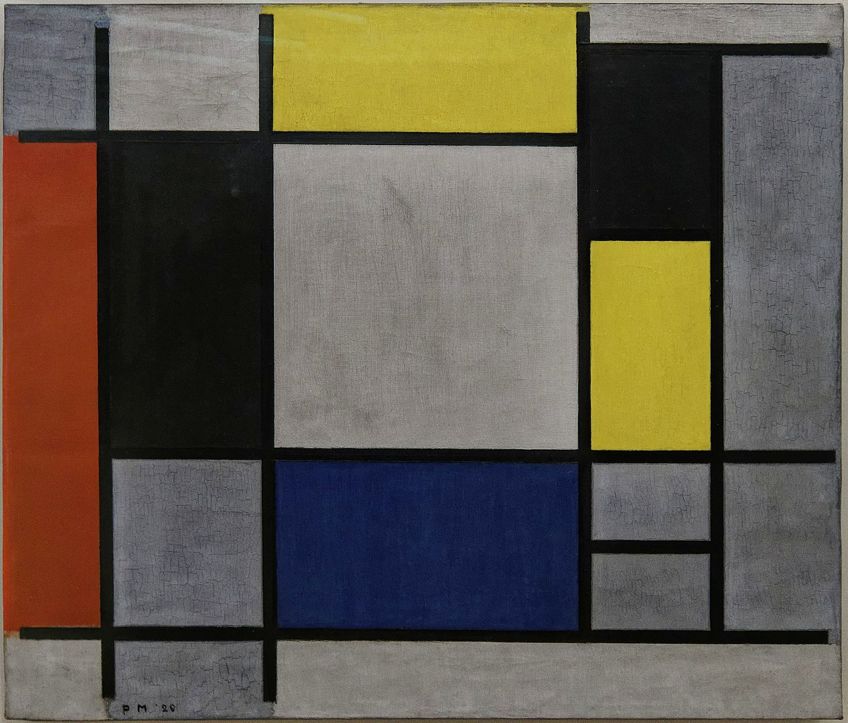
Developed by van Doesburg around 1925, Elementarism was a product of both De Stijl and Neoplasticism. Presenting his own aesthetic theory, van Doesburg’s Elementarism Manifesto appeared in the 1926 to 1927 issues of De Stijl. Friedrich Vordemberge-Gildewart, Georges Vantongerloo, Bart van der Leck, J.J.P. Oud, and Gerrit Rietveld are some De Stijl artists and architects who briefly practiced Elementarism, incorporating diagonals into their work. Arguably, the most impressive innovation made by Elementarism was the move to merge painting and architecture. In the collaborative work Cafe L’Aubette (1926), Van Doesburg teamed up with Dada artists Sophie Taeuber-Arp and Jean Arp to design a dance hall governed by the principles of Elementarism. Both Elementarism and De Stijl faded away after van Doesburg died in 1931.
Through his extensive international work and travel, Mondrian was instrumental in transmitting Neoplasticism to Paris and New York, inspiring new artists to adopt the style. In 1931 Mondrian joined an international group of abstract artists called Abstraction-Creation which prompted many of the group’s members to begin experimenting with Neoplasticism. They began to use solely primary colors and horizontal and vertical lines, intersecting at binary angles. The grand hopes of flashy European art movements like Neoplasticism were dashed as the world careened directly into another great war. France and Great Britain declared war on Germany on the 1st of September 1939 and the momentum of these artistic movements died down. Although he became isolated from avant-garde Paris, the Netherlands remained neutral during the Second World War and Mondrian continued his artistic practice unencumbered.
Characteristics of Neoplasticism Art
Neoplasticism artists rejected the concept that art should represent something or be an illusion of reality. Instead, the non-objective forms of Neoplasticism art presented themselves as truer versions of worldly objects. Neoplasticism advocated for a universalized reduction of the principles of art to the most elementary essentials. Art that adhered to a neoplastic philosophy used basic shapes and color to produce simple visual compositions. Neoplasticism art primarily used contrasting vertical and horizontal lines, basic shapes like rectangles or squares, and primary colors. These mathematically sparse, asymmetrical compositions created points of interest using positive and negative emphasis.
The juxtaposition of vertical and horizontal lines or curves was meant to emphasize the structured yet opposing forces of nature and reality.
Neoplasticism artists mainly used the primary colors red, blue, and yellow along with white, gray, and black. They created emphasis, movement, and balance through color contrast. Neoplasticism artists believed that the material and conceptual properties of an artwork could achieve rhythm and harmony. While it was led by rational calculation and mechanical gesture, Neoplasticism art was also driven by intuition. Neoplasticism artists never framed their paintings as they saw them as extensions of the natural forms of beauty.
Neoplasticism Art
The two main figureheads of Neoplasticism are undoubtedly Piet Mondrian and Theo van Doesburg. Neoplasticism artists made purely non-objective paintings with a utopian aspiration for dynamic balance. They believed that merging painting with architecture, and design would lead to a harmonious post-war society. Neoplasticism art intended to infiltrate the studio, the home, the street, the city, and eventually the entire world.

Piet Mondrian
| Birth | 7 March 1872 |
| Death | 1 February 1944 |
| Place of Birth | Amersfoort, Netherlands |
| Associated Art Movements | De Stijl and Abstract Art |
| Nationality | Dutch |
The Neoplasticism artist Piet Mondrian was undoubtedly one of the key pioneers of abstract painting. Mondrian’s paintings were simplifications of the elements, seeking their purest forms. His paintings became devoid of all representations of reality and instead aimed to express the relationships between shapes and colors. Mondrian wanted to achieve balance and harmony through the basic art elements. The artist’s precision was such that though they were carefully composed, he did not use a ruler to measure his lines and executed them by hand. His bold, black lines are always asymmetrical and simultaneously achieve a sense of movement and balance. He prepared his own colors and painted the color fields layer by layer directly from the tube.
His paintings appear both colorful and refrained as no colors are dominant over others.
Victory Boogie Woogie (1942 – 1944)
| Date | 1942 – 1944 |
| Medium | Oil and paper on canvas |
| Dimensions (cm) | 127 x 127 |
| Location | Kunstmuseum, the Hague, Netherlands |
Made during his innovative American period, Mondrian conceived the Neoplasticism painting Victory Boogie-Woogie in anticipation of victory during World War II. This artwork embodies the artist’s love of American jazz and of New York City, as both influence this dense painting is filled with an energetic multiplicity that creates a dazzling effect. This piece of Neoplasticism art is presented in a diamond-shaped format and tilted at a 45-degree angle, creating a clear sense of spatial dynamics, and conjuring architectural associations.
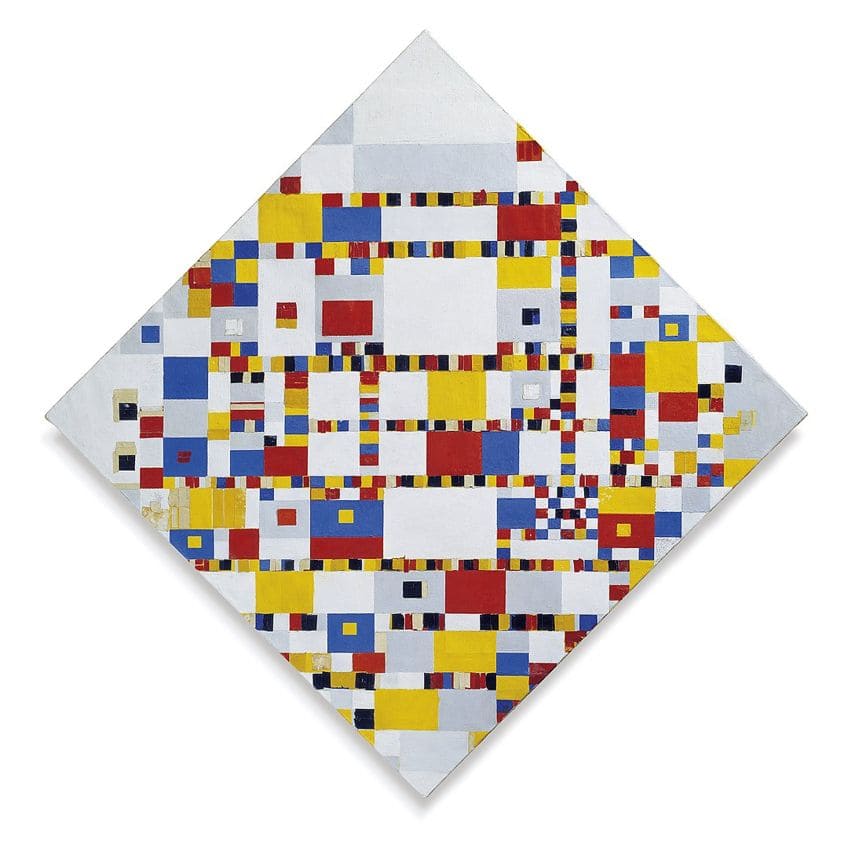
First creating a grid of uniform delineations, Mondrian composed over 600 brightly colored planes divided with a composition of smaller and larger lines and planes of primary color. This painting is an example of Mondrian’s famous use of strips of colored tape. Tape which remains in place on the canvas to this day. The purpose of the tape was to recompose, modify, and adjust parts of the composition. Victory Boogie-Woogie‘s surface is marked by Mondrian’s mechanical use of primary colors in a strictly linear pattern.
Theo van Doesburg
| Birth | 30 August 1883 |
| Death | 7 March 1931 |
| Place of Birth | Utrecht, Netherlands |
| Associated Art Movements | De Stijl and Neoplasticism |
| Nationality | Dutch |
The extroverted leader of the avant-garde movement De Stijl, Theo van Doesburg was a Dutch painter, decorator, poet, writer, and art theorist who was also considered a key Neoplasticism artist. Theo van Doesburg argued for the integration of painting, design, and architecture. The multidisciplinary artist designed everything from buildings, furniture, room decorations, stained glass, and household items. As a young artist, Van Doesburg was influenced by the Post-Impressionism and Fauvism movements. While reviewing an exhibition in 1915 Van Doesburg encountered Piet Mondrian’s art and they formed a mutually influential bond. Van Doesburg’s paintings evolved to embody an artistic ideal of a reductive abstract aesthetic.
His artworks achieved unity through the relationship between the use of basic art elements.
Contra-Composition of Dissonances, XVI (1925)
| Date | 1925 |
| Medium | Oil on canvas |
| Dimensions (cm) | 180 x 100 |
| Location | Gemeentemuseum den Haag, the Hague, Netherlands |
As an artistic style, Neoplasticism was both universal and restrained. After Van Doesburg established his offshoot of Neoplasticism, Elementarism, he began to focus on diagonal rather than vertical and horizontal lines. His famous Counter-Compositions series is a classic aesthetic example of Neoplasticism art. The geometric non-representational painting Contra-Composition of Dissonances, XVI consists of black-outlined rectangles. Typical of the Neoplasticism style, the rectangular shapes are organized into a structure divided by lines, though these are diagonal instead of vertical and horizontal. Relative to the edges of the canvas, the rectangles framed by thick, black lines are tilted at a 45-degree angle.
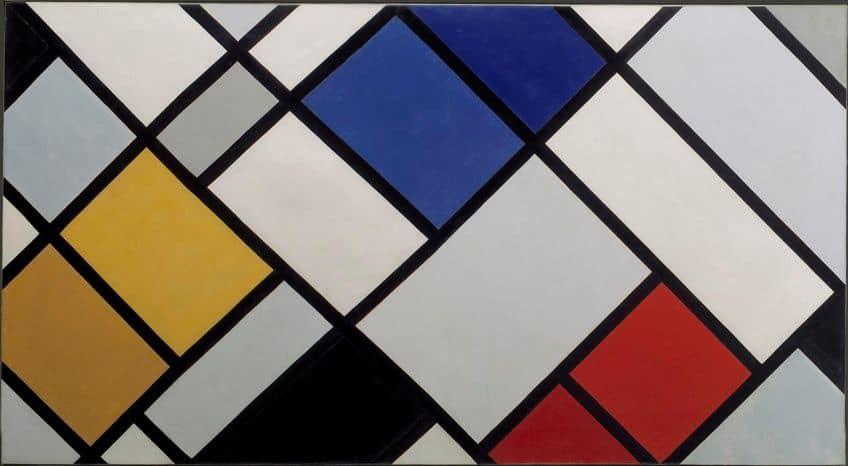
The color scheme is also in keeping with Neoplasticism art. The color tones slightly but consistently shift throughout the canvas between red, blue, yellow, gray, and white. The fact that the shifting color planes are framed by thick, black, diagonal lines creates a grid-like construction on a flat surface. The composition is meticulous, but there is a sense of gesture and movement in the lines. The diagonal lines create a dynamic and complex balance of abstract forms and achieve an optical feeling of beauty.
The New Now
Neoplasticism influenced various 21st century artists. From Abstract Expressionist painter Ad Reinhardt, Hard-Edge painter Ellsworth Kelly, the Minimalist sculptor Donald Judd, and Op artist Bridget Riley. But Neoplasticism was not limited to fine art. Red and Blue Chair (c. 1923) and the Rietveld Schröder House (1924) proved that the Neoplasticism artist Gerrit Rietveld excelled at using Neoplasticism to merge art, architecture, and design.
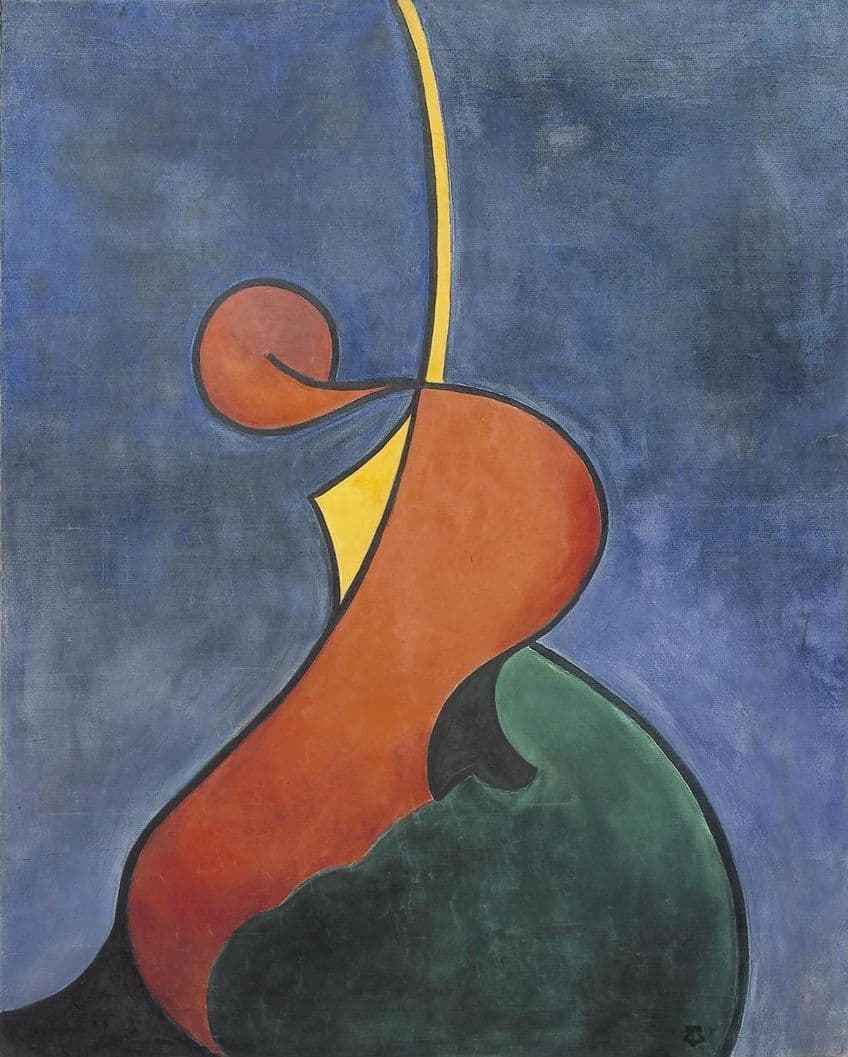
Neoplasticism has made an immense impact on fashion. By the 1930s, Lola Prusac’s Hermes bags featured Neoplastic designs. The French fashion house Yves Saint Laurent debuted their distinctly Neoplastic Mondrian Collection. The couture house Alexander McQueen used Neoplastic designs in their 2014 collection. In 2008 the sports brand Nike used Neoplastic designs to produce a line of tennis shoes.
Regardless of its universal appeal, this movement’s founder, Piet Mondrian, was always averse to the notion of Neoplasticism becoming a mere decorative style. For him, Neoplasticism embodied a utopian vision, which strove to simplify the greatest conflicts of human existence. Neoplasticism artists saw the three-dimensional world as deceptive and endeavored to present their viewers with the essence of meaning, thus attempting to change the viewer’s visual experience. Of course, they quickly realized that this goal was unattainable, and the movement quickly faded away. This was by no means the end of Neoplasticism. On the contrary, because of its extremely elemental forms, it became symbolic of Modern art in general and its iconic principles seeped into every crevice of popular culture. Today, Neoplastic designs can be seen in contemporary merchandise ranging from refrigerator magnets to coffee cups.
Frequently Asked Questions
What Are Plastic Arts?
The term plastic arts does not describe the material itself, but its material qualities. This is due to the fact that plastic can be manipulated and molded into other forms. Thus, the plastic arts refer to the condition of plasticity. Painting and sculpture are categorized as plastic arts, which makes them distinct from other art forms such music and literature.
What Is Important About Neoplasticism?
Because it focused on absolute non-objectivity in the early 20th century, Neoplasticism is a quintessential modern art style. The Dutch movement was an important precursor to other art movements such as Abstract Expressionism, Post-Painterly Abstraction, and Minimalism.
What Are the Neoplasticism Art Principles?
The principles of Neoplasticism art are characterized by primary colors, rectangular planes, and straight lines. As an artistic philosophy, Neoplasticism denounced naturalistic representation and favored an austere and formal vocabulary.
What Was Theo Van Doesburg’s Real Name?
While his became a household name as one of the most influential European Modernism artists, throughout his artistic career, Theo van Doesburg practiced under a pseudonym. The Dutch De Stijl artist was born Christian Emil Marie Küpper.
Are Bauhaus and Neoplasticism Connected?
Yes, these two are indeed connected. Van Doesburg was able to spread the principles of Neoplasticism in France and Germany as he lectured at the Weimar Bauhaus from 1921 until 1923. There, he met the Russian Constructivist El Lissitzky, whose notions of the combination of art and architecture impacted his practice.
Liam Davis is an experienced art historian with demonstrated experience in the industry. After graduating from the Academy of Art History with a bachelor’s degree, Liam worked for many years as a copywriter for various art magazines and online art galleries. He also worked as an art curator for an art gallery in Illinois before working now as editor-in-chief for artfilemagazine.com. Liam’s passion is, aside from sculptures from the Roman and Greek periods, cave paintings, and neolithic art.
Learn more about Liam Davis and about us.
Cite this Article
Liam, Davis, “Neoplasticism – Introducing the New Image Movement.” artfilemagazine – Your Online Art Source. September 28, 2023. URL: https://artfilemagazine.com/neoplasticism/
Davis, L. (2023, 28 September). Neoplasticism – Introducing the New Image Movement. artfilemagazine – Your Online Art Source. https://artfilemagazine.com/neoplasticism/
Davis, Liam. “Neoplasticism – Introducing the New Image Movement.” artfilemagazine – Your Online Art Source, September 28, 2023. https://artfilemagazine.com/neoplasticism/.



